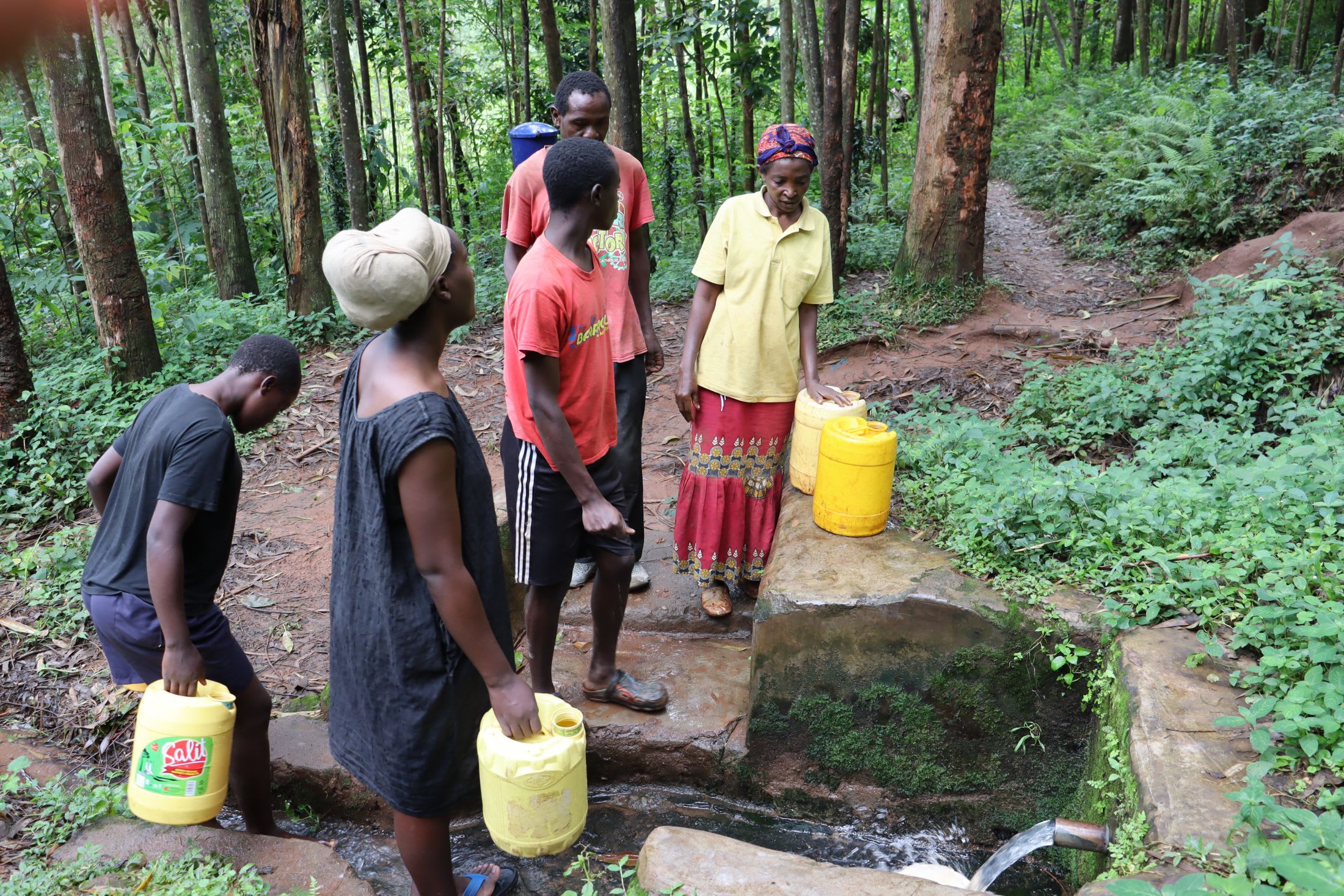The Gimunge Community has 77 residents who rely on the once-protected Thomas Mukwese Spring. The spring has degraded over time, making fetching water there an arduous process. A neighboring church also uses this waterpoint, making the wait for water even longer.

Field Officer Amos Emisko shared a few of the many problems this waterpoint has: "The spring is within a forest of eucalyptus trees, where the community needs proper sensitization to bring them down. The spring is inaccessible during [the] rainy season when it becomes slippery, mushy, and scary. The discharge pipe is corroded."
10-year-old Bruce deals with the headache of the crumbling spring every day.

Bruce.
He said, "The spring is damaged. The spring area is very wet and slippery, that makes us wait for some time. The spring discharge is good, but during [the] rainy season, the water turns slightly cloudy. We have to wait [for] it to clear.

Waiting to collect water.
Due to the high number of people who rely on the spring, Bruce and the other community members often have to wait to collect water. Water collection doesn't happen once a day; they usually make multiple trips. This means most of their day is consumed by fetching water, stealing time from other crucial tasks.
Another challenge they face is accessibility. The stairs are so damaged that getting to the spring to collect water is dangerous, especially for the most vulnerable.

Bruce in the spring.
"If the spring is protected well with stairs [on] both sides, the accessibility challenge will be solved. Rainwater needs to be redirected to another place, though we have tried to plant bamboo," Bruce shared.
With clean water access, Bruce can put his time and effort into the activities of his choosing.
"I will be learning how to pick tea from our neighbor's farm. I will also be playing with my friends and having little time for home chores," he said when asked how he would like to spend his time if it wasn't consumed with collecting water.

Bruce also has quite the role model to look up to. We asked him what he wanted his future to look like. He said, "To be a teacher like my mother." Protecting the spring will help make his dream attainable.
Steps Toward a Solution
Our technical experts worked with the local community to identify the most effective solution to their water crisis. They decided to safeguard the existing flowing spring.
Spring Protection
Springs are natural water sources that originate from deep underground. As water travels through various layers of the earth, it undergoes a natural filtration process, making it cleaner and safer to drink. To protect these spring sources from contamination, we construct a waterproof cement structure around layers of clay, stone, and soil. This design channels the spring water through a discharge pipe, facilitating easier, faster, and cleaner water collection.
Chlorine Dispenser
As an extra measure towards water quality safety, uniquely engineered chlorine dispensers are installed at all of our spring protection projects so community members can treat their water with pre-measured doses of chlorine. The chlorine treats any residual contamination and stays active for two to three days, ensuring water stays safe to use even when stored at home. Chlorine delivery and maintenance of the dispensers are part of our ongoing community support.
Community Education & Ownership
Hygiene and sanitation training are integral to our water projects. Training is tailored to each community's specific needs and includes key topics such as proper water handling, improved hygiene practices, disease transmission prevention, and care of the new water point. Safe water and improved hygiene habits foster a healthier future for everyone in the community. Encouraged and supported by the guidance of our team, a water user committee representative of the community's diverse members assumes responsibility for maintaining the water point, often gathering fees to ensure its upkeep.

 Protected Spring
Protected Spring
 Rehabilitation Project
Rehabilitation Project


















